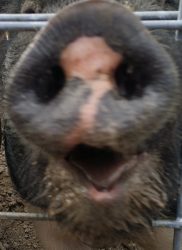Introduction
This is where I give more details on my various goals, and some of the methods I am using to track progress or to make progress.
Goals
I have a number of goals – some big, some small, some related to body composition, some related to homestead, and some related to general fitness.
My main, long term body composition goal is to reach 10% body fat, and an overall weight of 220 – 225 pounds. Amusingly, this will still give me a BMI that says I am overweight, almost to the point of being obese.
Step goals to reach this are getting my weight below 260 then below 240, getting my percent body fat below 30%, then 20%, then 15% and eventually 10%. And the final piece is adding the 20-25 pounds of lean mass needed to reach my desired body composition.
Fitness related, I want to be able to do a crow pose, a human flag, free-standing handstand pushups, and sit in the full lotus position.
Homesteading goals – I want to be mostly self sufficient, with enough rabbit meat, duck meat, duck eggs, and produce to minimize the amount of food I need to purchase, and also be able to sell enough cover the cost of feeding the animals and the little bit of food I’d still need to buy for myself.
Methodology
I don’t really have much for this section, beyond talking about my methods for calculating percent body fat.
While I know it is best to weight weekly and measure monthly, I like the data points and so I weigh and measure daily.
I measure hips, waist, (left) wrist, (left) forearm, (left) upper arm, (left) thigh, (left) calf, and neck.
These values are then entered into a spreadsheet, and from there it calculates the daily difference in weight, total difference (from a starting point of January 01, 2018), monthly difference, per cent of starting weight lost. On a separate sheet, it also calculates percent body fat, using Heritage, US Navy, YMCA, Covert Bailey, and Modified YMCA methods, then takes the average of those values. I also calculate using Deurenberg method, but do not use that for other purposes.
While I use the average of the five mentioned methods, I also take an average excluding the Heritage method (which uses BMI), and one that includes Deurenberg – another BMI based method.
For each of the methods – including the two main averages – I then calculate the current amount of lean mass, amount of fat, the daily and total change, how much total weight, lean mass, and fat I would have at 10% and 15% body fat with current estimate of lean mass, and a protein range – using 0.6 grams per pound of lean mass as a minimum and 0.8 grams per pound of lean mass as a maximum.
The last piece of calculated information is how many pounds of fat I would need to lose, and how many pounds of lean mass I need to gain, in order to reach my long term goal of 10% body fat and 200 pounds of lean mass.
Closing Thoughts
I know that my estimates are not necessarily accurate, however, I am consistent in when and how and where I measure, so that, combined with using an averaged value, gives me a consistent value to base my decisions on.
Once I get closer to my goals, I will seek out a more precise method of body composition measurement, such as calipers (using both 3 and 7 fold methods), or even something like a DEXA scan.
For the time being though, consistency matters more than accuracy for this part of my journey, as it is more the trend of the numbers more so than the numbers them self that are important.

